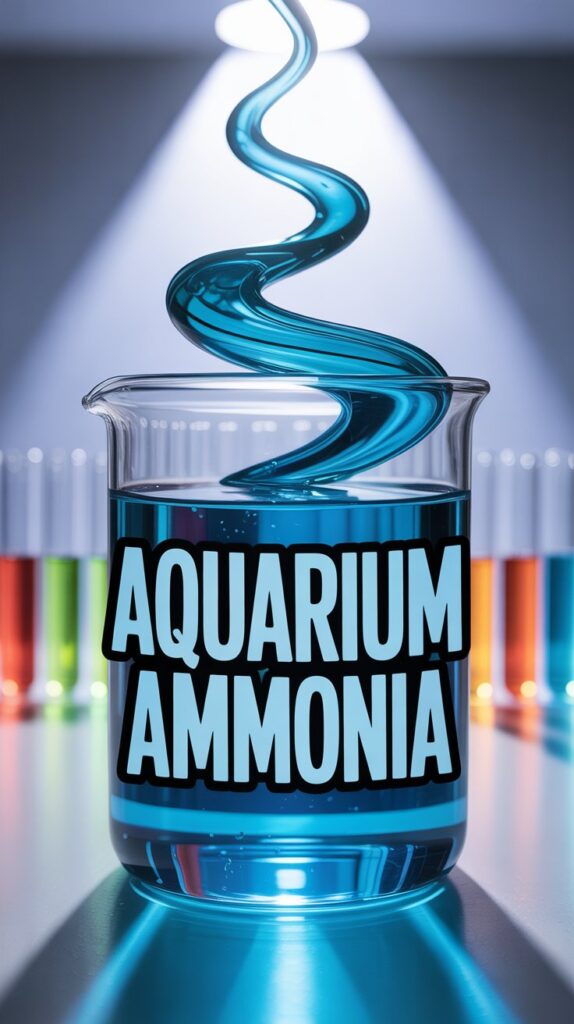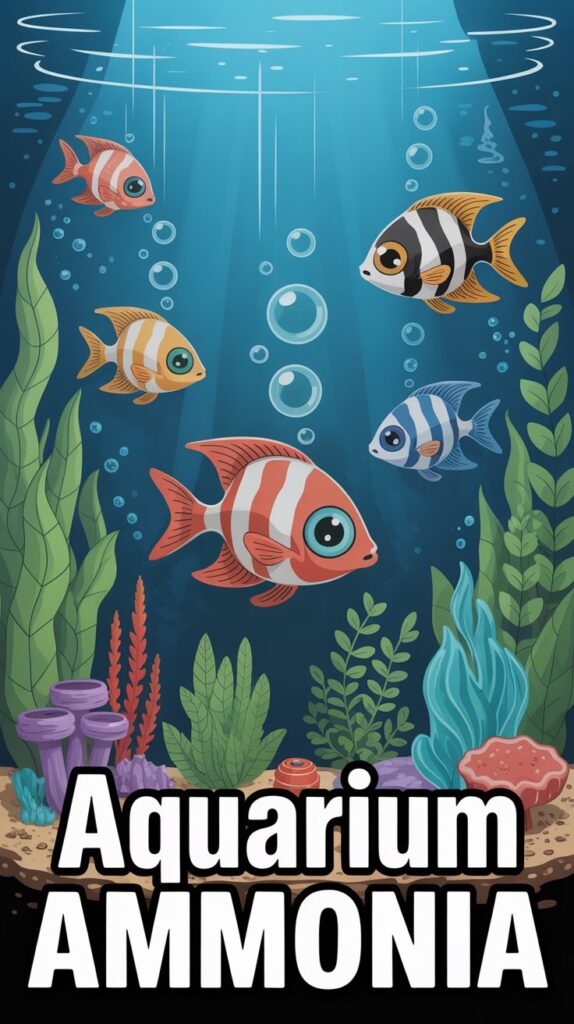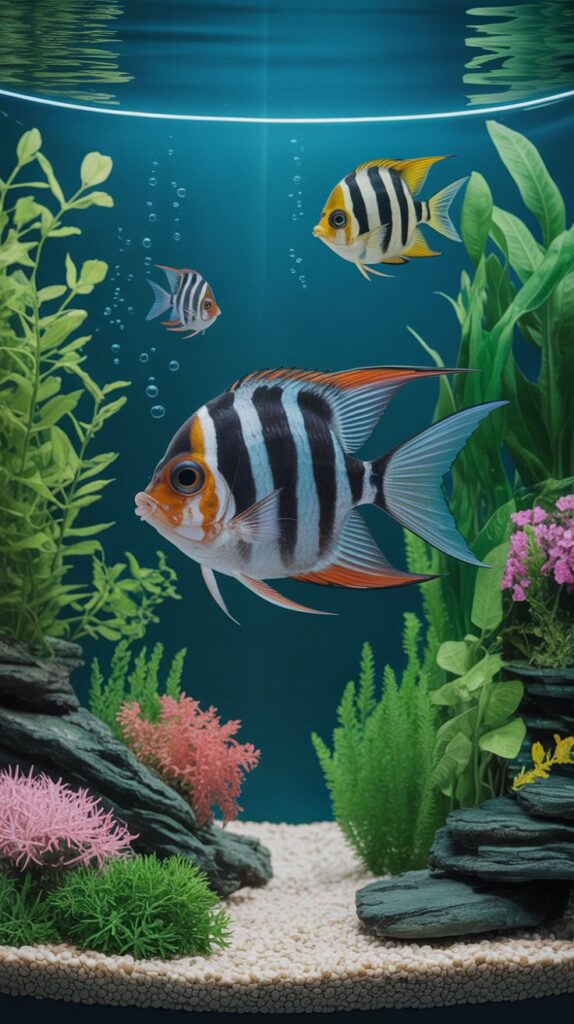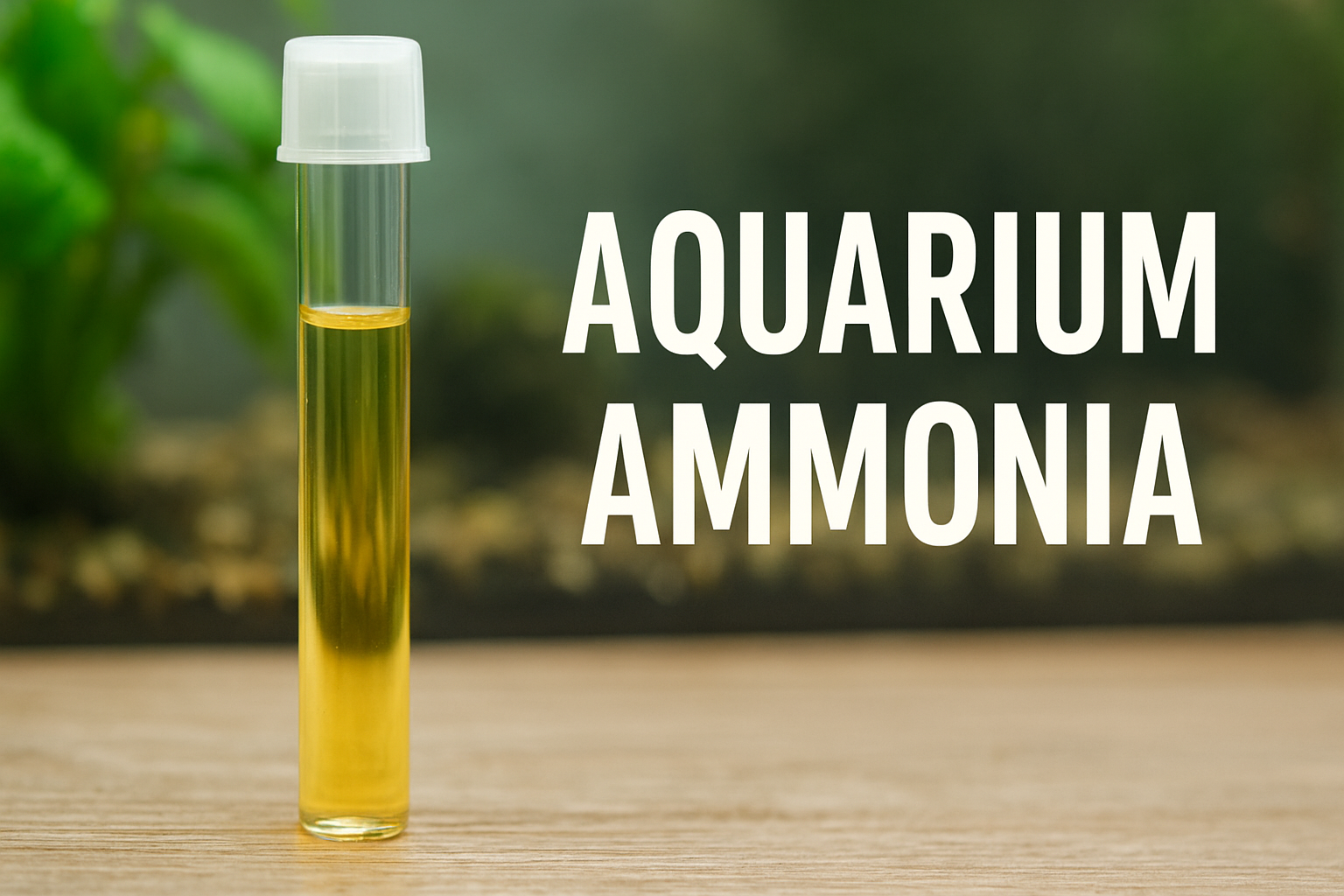When it comes to keeping fish healthy and ensuring a thriving aquarium, few topics are as important as aquarium ammonia. Whether you’re a beginner aquarist or an experienced hobbyist, understanding ammonia and its role in aquarium water chemistry is essential. Ammonia is both a natural byproduct of fish waste and one of the most toxic substances that can build up in a closed aquatic system. Left unchecked, it can quickly harm or even kill your fish.
In this comprehensive guide, we’ll explore what aquarium ammonia is, why it forms, how to test for it, ways to control it, and long-term strategies to maintain a safe and balanced aquatic environment.
What is Aquarium Ammonia?
Ammonia (chemical formula NH3) is a nitrogenous compound that occurs in aquariums as part of the nitrogen cycle. It is primarily produced through:
- Fish waste (urine and feces)
- Uneaten fish food decomposing
- Dead plants or algae decaying
- Dead fish or other organic matter breaking down

In water, ammonia exists in two forms:
- NH3 (Ammonia gas): Highly toxic to fish, even at low levels.
- NH4+ (Ammonium ion): Less toxic, depending on pH and water temperature.
The ratio of toxic ammonia to ammonium depends heavily on pH. At higher pH (above 7.5), ammonia is more toxic, while at lower pH (below 7.0), it’s mostly converted into ammonium. This is why water chemistry plays such a huge role in ammonia management.
Why is Ammonia Dangerous in Aquariums?
Even though ammonia is a natural byproduct of aquatic life, it becomes a problem in aquariums because it accumulates quickly in a closed system. In the wild, vast water volume dilutes it, but in tanks, it can spike within hours.
The dangers of ammonia include:
- Gill damage: Ammonia burns fish gills, making it hard for them to breathe.
- Stress: Elevated levels weaken immunity, making fish prone to disease.
- Lethal toxicity: Concentrations as low as 0.5 ppm (parts per million) can be dangerous, and levels above 2.0 ppm can kill fish.
- Delayed effects: Even short-term exposure can cause long-lasting damage.
This makes ammonia control one of the most important parts of aquarium care.
The Nitrogen Cycle and Ammonia
To truly understand ammonia, you need to know about the nitrogen cycle. This is the process by which beneficial bacteria break down harmful waste in the aquarium.
- Ammonia Stage: Waste produces ammonia (NH3/NH4+).
- Nitrite Stage: Beneficial bacteria (Nitrosomonas) convert ammonia into nitrite (NO2-), which is also toxic.
- Nitrate Stage: Another type of bacteria (Nitrobacter) converts nitrite into nitrate (NO3-), which is much less harmful.
This cycle is what keeps aquariums stable. Without it, ammonia would accumulate rapidly. This is why cycling your aquarium before adding fish is crucial.
Signs of Ammonia in an Aquarium

If ammonia levels are high, your fish will show clear symptoms. Some signs include:
- Gasping at the surface (due to damaged gills)
- Lethargy or erratic swimming
- Clamped fins
- Red or inflamed gills
- Loss of appetite
- White or cloudy patches on the skin
- Sudden unexplained deaths
Testing water regularly is the only way to know for sure, but these symptoms often indicate that ammonia levels are dangerously high.
How to Test for Ammonia in Your Aquarium
Testing ammonia should be a regular part of your aquarium maintenance routine. You can use:
- Liquid Test Kits: Provide accurate readings of ammonia in ppm.
- Test Strips: Quicker but less precise.
- Ammonia Alert Sensors: Continuous monitoring with a color-changing indicator.
Ideally, your aquarium should have 0 ppm ammonia. If you detect any measurable amount, corrective action is needed immediately.
Causes of Ammonia Spikes
Ammonia spikes can occur suddenly, even in well-maintained tanks. Common causes include:
- Overfeeding: Uneaten food decays into ammonia.
- Overstocking: Too many fish produce too much waste.
- New Tank Syndrome: Tanks that aren’t fully cycled can’t process ammonia.
- Filter Failure: If your filter isn’t working properly, beneficial bacteria die off.
- Poor Maintenance: Infrequent water changes allow buildup.
- Medication Use: Some medications kill beneficial bacteria, leading to spikes.
How to Reduce Ammonia in an Aquarium

If you discover ammonia in your tank, quick action is essential. Here are proven methods:
1. Perform Immediate Water Changes
Change 25–50% of the tank water to dilute ammonia levels. Use a water conditioner that detoxifies ammonia for extra safety.
2. Use Ammonia Neutralizers
Products like Seachem Prime or API Ammo-Lock bind ammonia temporarily, making it less toxic until bacteria can process it.
3. Improve Filtration
- Add or replace filter media with bio-media that encourages bacterial growth.
- Make sure your filter is properly sized for your tank.
4. Add Beneficial Bacteria
Bacterial supplements can speed up the process of converting ammonia to nitrite and nitrate.
5. Stop Overfeeding
Feed fish only what they can consume in 2–3 minutes. Remove uneaten food immediately.
6. Vacuum the Substrate
Use a gravel vacuum to remove decaying organic matter that contributes to ammonia.
7. Control Stocking Levels
Avoid keeping too many fish in one tank. Research the recommended fish-per-gallon ratio.
Long-Term Ammonia Prevention
Once you’ve stabilized your aquarium, the goal is to prevent future ammonia problems. Here’s how:
- Cycle Your Tank Properly: Never add fish to an uncycled tank.
- Maintain a Regular Cleaning Schedule: Perform weekly water changes of 20–30%.
- Check Filters Often: Clean filter media gently in tank water to preserve bacteria.
- Test Water Weekly: Catch small problems before they become big ones.
- Choose the Right Tank Size: Larger tanks dilute waste more effectively.
- Consider Live Plants: Plants absorb ammonia and nitrates naturally, helping balance water chemistry.
Aquarium Ammonia in Different Tank Types

Freshwater Aquariums
Most freshwater tanks rely on regular water changes and biological filtration to control ammonia.
Saltwater Aquariums
Marine tanks are more sensitive, and ammonia spikes can devastate corals and invertebrates. Protein skimmers and live rock help reduce waste.
Planted Tanks
Live plants consume ammonia as a nutrient, making planted aquariums naturally more stable.
Nano Tanks
Small tanks are prone to rapid ammonia spikes because of their limited water volume. Frequent monitoring is crucial.
Conclusion
Ammonia is one of the most critical aspects of aquarium care. While it’s a natural byproduct of fish waste, it can quickly become deadly if not managed properly. Understanding the nitrogen cycle, testing water regularly, preventing overfeeding, and maintaining strong filtration are the keys to keeping ammonia under control. With careful management, you can create a healthy and thriving environment for your fish.
FAQs about Aquarium Ammonia
Q1: What is a safe ammonia level for aquariums?
A: The only safe level is 0 ppm. Any detectable ammonia should be treated immediately.
Q2: How long does it take for ammonia to leave a tank?
A: It depends on your nitrogen cycle. In a properly cycled tank, beneficial bacteria convert ammonia into nitrites within hours to days.
Q3: Can ammonia kill fish overnight?
A: Yes. High spikes (2.0 ppm and above) can kill fish very quickly.
Q4: Does boiling water remove ammonia?
A: No. Ammonia cannot be removed by boiling water. It must be processed biologically or neutralized chemically.
Q5: Do live plants reduce ammonia?
A: Yes. Live plants naturally absorb ammonia, helping stabilize aquarium conditions.
Q6: Why does ammonia keep coming back in my tank?
A: Persistent ammonia issues often mean the tank is not fully cycled, is overstocked, or the filter is insufficient.
Q7: Can bottled bacteria help reduce ammonia?
A: Yes. Bacterial supplements speed up the cycling process and help process ammonia more quickly.

